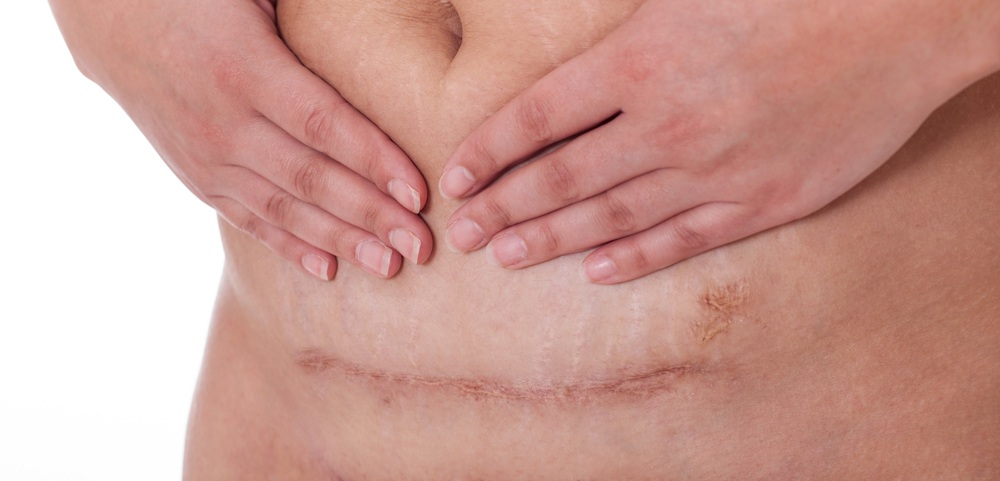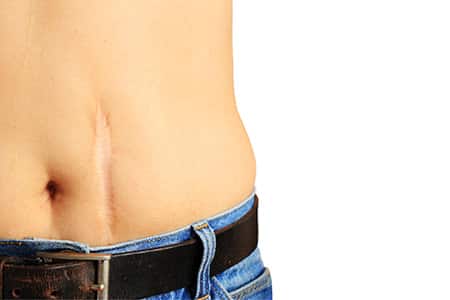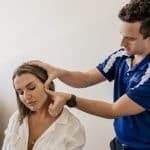Treatment for abdominal scars causing lower back pain


When an operation like this is performed there is obvious pain and discomfort immediately following the procedure. It is important that the patient keeps as mobile as possible as this not only helps with the pain, but helps to reduce the amount of rigid tissue as the scar heals. It may also be important to ensure that you have adequate pain relief on board so that you are then able to move without it causing too much pain.
The initial inflammation from surgery takes around two weeks to settle down. The tissues then continue to heal for the next four to six weeks. During this phase, the scar tissue starts to form so it is important to keep the area moving. After 12 weeks there should be significantly less pain from the actual surgery, so if there is a pain this could be a result of the scar tissue that has started to form.
After surgery as soon as possible it is necessary to be up and about. Walking will help to mobilise tissues and keep the body moving well overall. It is important not to lift anything heavy, push or pull anything with much effort and also important not to strain when going to the toilet. Any of these things can lead to straining of the tissues around the scar. Other gentle mobility exercises can be given to ensure that no postural changes occur as a result of the healing scar.
At around the six to eight-week point, it’s important to start to mobilise the scar and the tissues around the scar. The scar must be well healed before this can be done. Gentle mobilisation of the scar at the skin level, the muscle level and the organ level is important to avoid the scar tissue advancing into the abdominal cavity. The mobilisation of these tissues also creates a nice flat scar that heals well due to the increased blood flow to the area.
The scar then heals with less tightness, which then is less likely to affect the movement in the area and helps to lessen the pain that develops with tight tissues. The massaging of these tissues should be done on a daily basis. You should be taught how to do these at-home massages by an experienced physiotherapist who can teach you how to mobilise each level of tissue.
Other exercises that will help relax the tissues and associated stiffness in the spine can also be given to assist with recovery. Movement of the diaphragm may also play a role in keeping the tissues in the abdomen mobile.
Descent and ascent of the diaphragm assists in spinal mobilisation and mobilisation of the abdominal tissues, so breathing exercises may also be helpful to assist in the healing of the area and the minimisation of scar tissue.
The tissues around the scar also develop some inflammation around the site. Initially cold packs can be used to reduce the inflammation but later on, heat packs are more beneficial to the mobilisation of the scar. The swelling and associated accumulation of fluid in the tissues can be treated with some targeted lymphatic drainage and also some dry bushing which helps to reduce this. The dry brushing can also be done at home on a daily basis.
Choose Graceville Physio, Pain Slayers for your abdominal scar treatment in Brisbane
We offer physiotherapy sessions in our private treatment rooms or via Telehealth to teach you how to do the home treatments as described above.
If you have had abdominal surgery in the past and are getting lower back pain, abdominal pain or having problems with your bowels, physiotherapy may be able to help reduce your symptoms and get you back to doing what you love doing. Contact the team at Graceville Physio today to book an appointment.
Related Tag: Lower Back Pain Exercises Brisbane


